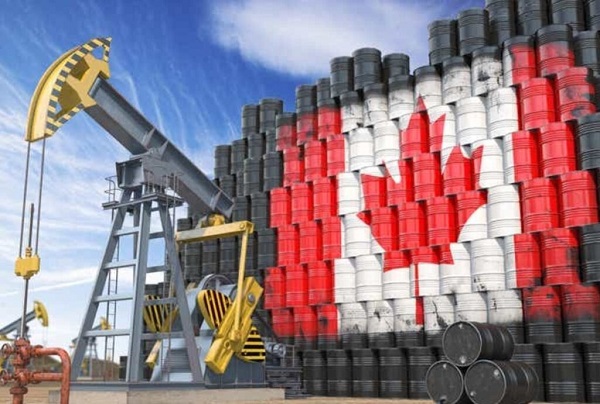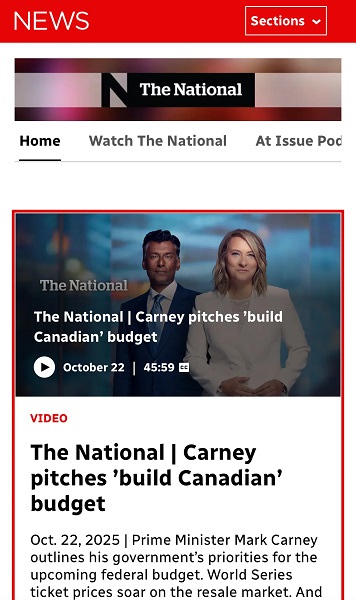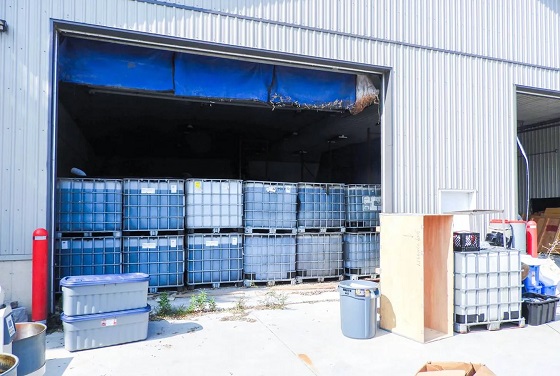Business
Elbow to the Face: What Canada Risks by Embracing Economic Nationalism
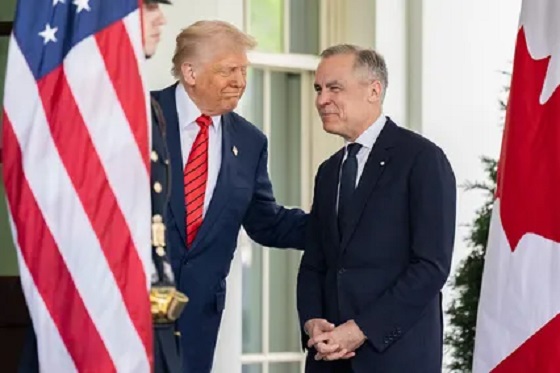
There was free trade between Canada and the U.S. before there was a country called Canada. In 1854, 13 years before Confederation, the colonies of British North America signed a reciprocity agreement with the Americans that allowed for free trade in lumber, meat, grains, coal, pitch and tar and other basic goods. This quickly led to an economic boom throughout Canada that lasted until the Americans revoked the deal in 1866.
Since then, trade relations between Canada and the U.S. have been on a merry-go-round alternating between protectionism and openness depending on the political mood in each country. It is an historical legacy that holds many valuable lessons for how Canada should respond to the current Trump tariffs. And perhaps the best source of advice can be found in what historians today call the “Nixon Shocks”.
In the early 1970s, U.S. president Richard Nixon was dogged by a new economic malaise termed “stagflation”. In response to this erosion in America’s financial might, Nixon upended global economic relations with his New Economic Policy, taking the U.S. off the gold standard, instituting wage and price controls and imposing a 10 per cent tariff on all imports. To Canada’s shock and horror, it too was subjected to Nixon’s tariffs.
During the postwar period Canada and the U.S. had slowly been embracing freer trade and so the tariffs were seen as a serious break in Canada’s access to the U.S. market. Prime Minister Pierre Trudeau argued vigorously for an exemption, but was unsuccessful. (Sound familiar?)
In response to being rebuffed by Nixon, the Trudeau government released a white paper outlining three possible reactions. The first was to maintain the status quo. Second, seek even stronger economic relations with the U.S. Third, look elsewhere. The Trudeau government found the final choice, what became known as the Third Option, to be the most attractive and pursued it aggressively.
In addition to seeking out trade with other countries, the Trudeau government also tried to expand Canada’s political and cultural relations with other countries, especially Communist countries such as the Soviet Union, China and Cuba. At home, the Third Option gave birth to many deliberately protectionism policies meant to keep the Americans at bay, including the Foreign Investment Review Agency and the National Energy Program.
The Third Option’s overarching objective was to sever Canada’s deep economic and cultural ties with the U.S. It didn’t work. There was no real diversification of Canada’s export trade away from the Americans, despite all the self-harm caused by the NEP and other policies. Today, the Third
Option is widely acknowledged to have been a complete failure.
In recognition of this failure, in 1982 Trudeau set up the Royal Commission on the Economic Union and Development Prospects for Canada headed by
Donald S. Macdonald to investigate all aspects of the Canadian economy and deliver advice on how to “respond to the challenges of rapid national
and international change in order to realize Canada’s potential.”
The Macdonald Commission’s final report, delivered in 1985 to Progressive Conservative Prime Minister Brian Mulroney was a conclusive repudiation
of the Third Option and instead called for a free trade deal with the U.S.
To his credit, Mulroney set aside his party’s old animus towards free trade and entered into negotiations with U.S. President Ronald Reagan. The
result was the 1989 Canada-U.S. Free Trade Agreement, which was later followed by 1993’s NAFTA. And while these deals caused some dislocation
to Canada’s economy, the net result has been overwhelmingly positive – the same as was the case in 1854. The very fact Canadians today consider
Trump’s tariffs to be an economic crisis reveal how important free trade with the Americans has become to Canada.
Given these lessons of history, how should Canadians respond to the Trump Shocks today?
First, there’s no getting around the fact that Canada’s prosperity will always depend on trade with the U.S. Today, as was the case in the 1970s, more
than two-thirds of Canada’s exports go south of the border. Economic nationalism is not a winning strategy, as our experience in the 1970s with the Third Option demonstrates.
Second, history also tells us that the U.S. will eventually come around to recognizing the benefits of free trade. Higher tariffs mean higher prices and
less choice for American consumers, after all. Canada’s best chance for long-term success lies in making common cause with American interests
equally hard hit by tariffs, particularly in border states.
Third, while Canada waits for the U.S. to come back to its senses, we can’t ignore our own home-grown problems. In particular, Canada needs to
address its productivity crisis. Where we were once a top tier country in terms of productivity, today we are ranked 22 nd out of 32 OECD countries.
Fixing this issue will require tough choices, including reforming the tax code, investing in basic infrastructure, promoting competition, curtailing
social programs and pushing back against Indigenous veto-seeking.
It won’t be easy, but the current bout of patriotism and a ready-made villain in Trump means Canadians may be more accept such hardships in the
short-term. We should take advantage of the opportunity.
The best response to Trump’s tariffs is not to invent new ways to hate our neighbours, but to fix our own flaws. Only when our house is back in order
will we be ready to take full advantage of the American market when freer trade returns. And based on 171 years of experience, we can be sure it will.
Peter Shawn Taylor is senior features editor at C2CJournal.ca, where the original, longer version of this article first appeared.
Banks
Bank of Canada Cuts Rates to 2.25%, Warns of Structural Economic Damage
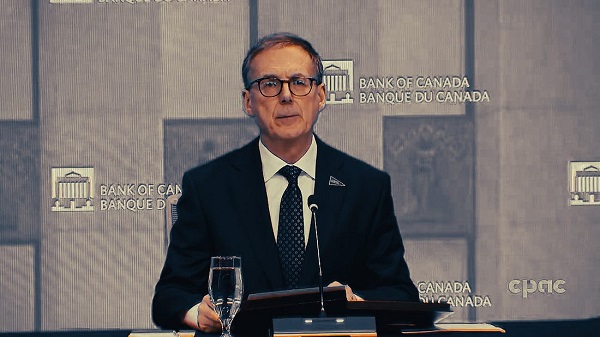
Governor Tiff Macklem concedes the downturn runs deeper than a business cycle, citing trade wars, weak investment, and fading population growth as permanent drags on Canada’s economy.
In an extraordinary press conference on October 29th, 2025, Bank of Canada Governor Tiff Macklem stood before reporters in Ottawa and calmly described what most Canadians have already been feeling for months: the economy is unraveling. But don’t expect him to say it in plain language. The central bank’s message was buried beneath bureaucratic doublespeak, carefully manicured forecasts, and bilingual spin. Strip that all away, and here’s what’s really going on: the Canadian economy has been gutted by a combination of political mismanagement, trade dependence, and a collapsing growth model based on mass immigration. The central bank knows it. The data proves it. And yet no one dares to say the quiet part out loud.
Start with the headline: the Bank of Canada cut interest rates by 25 basis points, bringing the policy rate down to 2.25%, its second consecutive cut and part of a 100 basis point easing campaign this year. That alone should tell you something is wrong. You don’t slash rates in a healthy economy. You do it when there’s pain. And there is. Canada’s GDP contracted by 1.6% in the second quarter of 2025. Exports are collapsing, investment is weak, and the unemployment rate is stuck at 7.1%, the highest non-pandemic level since 2016.
Macklem admitted it: “This is more than a cyclical downturn. It’s a structural adjustment. The U.S. trade conflict has diminished Canada’s economic prospects. The structural damage caused by tariffs is reducing the productive capacity of the economy.” That’s not just spin—that’s an admission of failure. A major trading nation like Canada has built its economic engine around exports, and now, thanks to years of reckless dependence on U.S. markets and zero effort to diversify, it’s all coming apart.
And don’t miss the implications of that phrase “structural adjustment.” It means the damage is permanent. Not temporary. Not fixable with a couple of rate cuts. Permanent. In fact, the Bank’s own Monetary Policy Report says that by the end of 2026, GDP will be 1.5% lower than it was forecast back in January. Half of that hit comes from a loss in potential output. The other half is just plain weak demand. And the reason that demand is weak? Because the federal government is finally dialing back the immigration faucet it’s been using for years to artificially inflate GDP growth.
The Bank doesn’t call it “propping up” GDP. But the facts are unavoidable. In its MPR, the Bank explicitly ties the coming consumption slowdown to a sharp drop in population growth: “Population growth is a key factor behind this expected slowdown, driven by government policies designed to reduce the inflow of newcomers. Population growth is assumed to slow to average 0.5% over 2026 and 2027.” That’s down from 3.3% just a year ago. So what was driving GDP all this time? People. Not productivity. Not innovation. Not exports. People.
And now that the government has finally acknowledged the political backlash of dumping half a million new residents a year into an overstretched housing market, the so-called “growth” is vanishing. It wasn’t real. It was demographic window dressing. Macklem admitted as much during the press conference when he said: “If you’ve got fewer new consumers in the economy, you’re going to get less consumption growth.” That’s about as close as a central banker gets to saying: we were faking it.
And yet despite all of this, the Bank still clings to its bureaucratic playbook. When asked whether Canada is heading into a recession, Macklem hedged: “Our outlook has growth resuming… but we expect that growth to be very modest… We could get two negative quarters. That’s not our forecast, but we can’t rule it out.” Translation: It’s already here, but we’re not going to admit it until StatsCan confirms it six months late.
Worse still, when reporters pressed him on what could lift the economy out of the ditch, he passed the buck. “Monetary policy can’t undo the damage caused by tariffs. It can’t target the hard-hit sectors. It can’t find new markets for companies. It can’t reconfigure supply chains.” So what can it do? “Mitigate spillovers,” Macklem says. That’s central banker code for “stand back and pray.”
So where’s the recovery supposed to come from? The Bank pins its hopes on a moderate rebound in exports, a bit of resilience in household consumption, and “ongoing government spending.” There it is. More public sector lifelines. More debt. More Ottawa Band-Aids.
And looming behind all of this is the elephant in the room: U.S. trade policy. The Bank explicitly warns that the situation could worsen depending on the outcome of next year’s U.S. election. The MPR highlights that tariffs are already cutting into Canadian income, raising business costs, and eliminating entire trade-dependent sectors. Governor Macklem put it plainly: “Unless something else changes, our incomes will be lower than they otherwise would have been.”
Canadians should be furious. For years, we were told everything was fine. That our economy was “resilient.” That inflation was “transitory.” That population growth would solve all our problems. Now we’re being told the economy is structurally impaired, trade-dependent to a fault, and stuck with weak per-capita growth, high unemployment, and sticky core inflation between 2.5–3%. And the people responsible for this mess? They’ve either resigned (Trudeau), failed upward (Carney), or still refuse to admit they spent a decade selling us a fantasy.
This isn’t just bad economics. It’s political malpractice.
Canada isn’t failing because of interest rates or some mysterious global volatility. It’s failing because of deliberate choices—trade dependence, mass immigration without infrastructure, and a refusal to confront reality. The central bank sees the iceberg. They’re easing the throttle. But the ship has already taken on water. And no one at the helm seems willing to turn the wheel.
So here’s the truth: The Bank of Canada just rang the alarm bell. Quietly. Cautiously. But clearly. The illusion is over. The fake growth era is ending. And the reckoning has begun.
Subscribe to The Opposition with Dan Knight .
For the full experience, upgrade your subscription.
Business
Ford’s Liquor War Trades Economic Freedom For Political Theatre

From the Frontier Centre for Public Policy
By Conrad Eder
Consumer choice, not government coercion, should shape the market. Doug Ford’s alcohol crackdown trades symbolic outrage for sound policy and Ontarians will pay the price
Ontario politicians have developed an insatiable appetite for prohibition. Having already imposed a sweeping ban on all American alcohol, Premier Doug Ford has now threatened to remove Crown Royal, Smirnoff and potentially other brands from LCBO shelves. Such authoritarian impulses reflect a disturbing shift in our political culture—one that undermines economic prosperity and individual liberty.
After Diageo, the multinational behind brands like Crown Royal and Smirnoff, announced in August that it would close its Amherstburg, Ont., bottling facility, affecting 200 workers, the political response was swift. NDP MPP Lisa Gretzky urged the government to retaliate by pulling Crown Royal from LCBO shelves. Days later, Ford dramatically dumped a bottle of the whisky during a press conference, signalling he might follow through.
Now, the premier has escalated the threat, vowing to remove Smirnoff and potentially other Diageo products.
These gestures may make headlines, but they come at a cost. They undermine business confidence, discourage investment, and send the wrong message to employers. More fundamentally, they reflect a poor understanding of how free societies settle disputes and make decisions.
To understand what’s at stake, it helps to consider the two basic mechanisms available to democratic societies: the marketplace and the ballot box. At the ballot box, citizens vote once, and majority rule determines a single outcome. The marketplace, by contrast, allows people to vote continuously with their dollars. Individuals make countless choices reflecting their own values and priorities. You get what you choose—without overriding anyone else’s preference.
There’s a role for government in correcting market failures, where there’s fraud, monopoly power or public risk. But banning legal products simply because of political displeasure with a company’s decision is not market correction. It’s coercion.
Diageo’s decision to close a facility may be unfortunate, but it doesn’t involve deception, unfair dominance, or harm to the public. Bans aren’t rooted in sound principle; they’re political, plain and simple.
Some argue the government is justified in acting to protect Ontario jobs. But that line of thinking is short-sighted. If job protection alone warranted banning products, we’d resist every innovation or trade deal that disrupted the status quo. Sustainable job growth depends on encouraging investment and innovation, not shielding every position from change.
The appropriate response to plant closures is policy reform, not retaliation. Ontario should focus on creating an environment where businesses want to invest and grow. That means fostering a stable, competitive business climate with clear rules, reasonable taxes, and efficient regulation. Threatening companies with bans only creates uncertainty and drives investment elsewhere.
With Ontarians spending $740 million annually on Diageo products, removing them from store shelves would impose real economic costs. Consumers would face fewer choices, weaker competition, and higher prices. Restaurants and retailers would be forced to adjust. The LCBO, Ontario’s government-run liquor retailer, would lose sales.
This isn’t hypothetical. The province’s ban on American alcohol is already projected to block nearly $1 billion in annual sales, while doing nothing to benefit Ontario consumers. The LCBO is serving political interests, not the public.
Supporters of such bans often reveal their lack of confidence in public opinion. Rather than persuade others to boycott a product voluntarily, they demand that government enforce a blanket restriction.
There’s a better way. Consumer-led boycotts offer accountability without coercion. They allow individuals to act on their beliefs without forcing others to comply. And they tend to be more effective, as companies respond faster to falling sales than to political theatrics.
But the issue at hand goes beyond liquor. It’s about whether elected officials should impose a single set of preferences on everyone, or whether citizens are trusted to decide for themselves.
Each new ban makes the next one easier to justify. Over time, these interventions accumulate and normalize government interference in private choice. Unlike consumer preferences, which can shift quickly and reverse, government prohibitions often persist. The LCBO’s century-old structure is evidence of how long some policies endure, even when they no longer serve the public interest.
This isn’t a call to eliminate government’s role. But it is a call for principled governance, the kind that distinguishes between legitimate oversight and overreach rooted in symbolism or political frustration.
Ontario’s government would do better to focus on long-term prosperity. That means building an economy where investors feel welcome, businesses can grow, and consumers are free to choose.
Ontarians are perfectly capable of making their own choices about which products to buy and which companies to support. They don’t need politicians like Ford making those decisions for them.
Conrad Eder is a policy analyst at the Frontier Centre for Public Policy.
-

 Alberta2 days ago
Alberta2 days agoPremier Smith sending teachers back to school and setting up classroom complexity task force
-

 International1 day ago
International1 day agoBiden’s Autopen Orders declared “null and void”
-

 Business1 day ago
Business1 day agoTrans Mountain executive says it’s time to fix the system, expand access, and think like a nation builder
-

 Alberta2 days ago
Alberta2 days agoThousands of Albertans march to demand independence from Canada
-

 Canada Free Press1 day ago
Canada Free Press1 day agoThe real genocide is not taking place in Gaza, but in Nigeria
-

 Crime2 days ago
Crime2 days agoSuspect caught trying to flee France after $100 million Louvre jewel robbery
-

 Business20 hours ago
Business20 hours agoCanada has given $109 million to Communist China for ‘sustainable development’ since 2015
-

 Business1 day ago
Business1 day agoCanada’s combative trade tactics are backfiring



